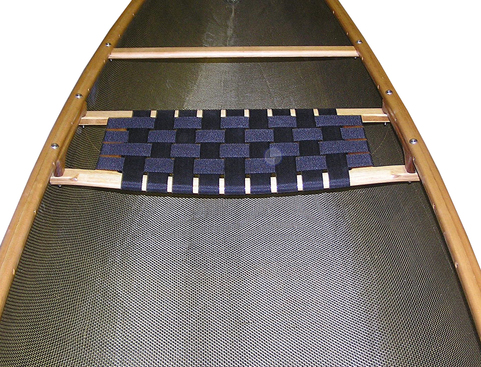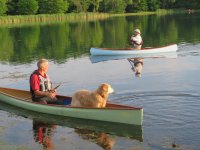After making up a sliding seat for my solo I decided to take it out because the boat turned out to be too heavy at 49 Lbs. The seat is an Eds canoe contoured seat which weighed close to 2 Lbs by itself with the sliding mount adding another 4 Lbs. I was hoping to end up with the solo weighing 45 Lbs. Not a lightweight by any means but when It weighed in at 49 Lbs I nicknamed it, my little tank. So to get the weight back in line with my target I'm going to try a laminated seat frame with the same type of fiberglassed ledge that Wtsedave used on his Northwest solo build.
Conk has been laminating seats for a long time. I see they're used on Hemlock boats with the frames made of ash and basswood. I did some research on different woods weights and strengths to come up with something I could laminate. I found it Interesting to see that the weights of the different woods pretty much paralleled the strengths, The heavier the stronger. Here's a list of woods I looked at.
Birch- 44 Lbs per cu ft, with 8,170 lbs of bending strength
Ash - 42, 15,000
Cherry - 35, 12,300
D fir - 32, 12,400
Poplar - 28, 10,100
Basswood - 28, 8,700
WRC - 23, 7,500
I'm thinking of cutting the frame size down to 1 1/8" to trim some weight and probably use D fir and Poplar for the wood. I'm not sure how well the Poplar would hold up in marine use though.
Conk has been laminating seats for a long time. I see they're used on Hemlock boats with the frames made of ash and basswood. I did some research on different woods weights and strengths to come up with something I could laminate. I found it Interesting to see that the weights of the different woods pretty much paralleled the strengths, The heavier the stronger. Here's a list of woods I looked at.
Birch- 44 Lbs per cu ft, with 8,170 lbs of bending strength
Ash - 42, 15,000
Cherry - 35, 12,300
D fir - 32, 12,400
Poplar - 28, 10,100
Basswood - 28, 8,700
WRC - 23, 7,500
I'm thinking of cutting the frame size down to 1 1/8" to trim some weight and probably use D fir and Poplar for the wood. I'm not sure how well the Poplar would hold up in marine use though.


